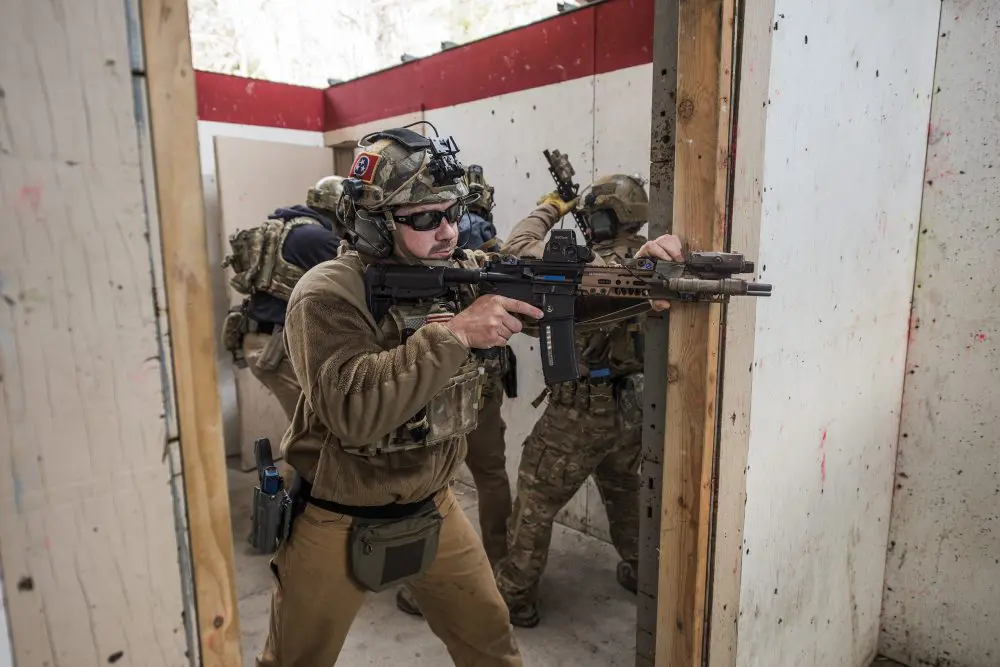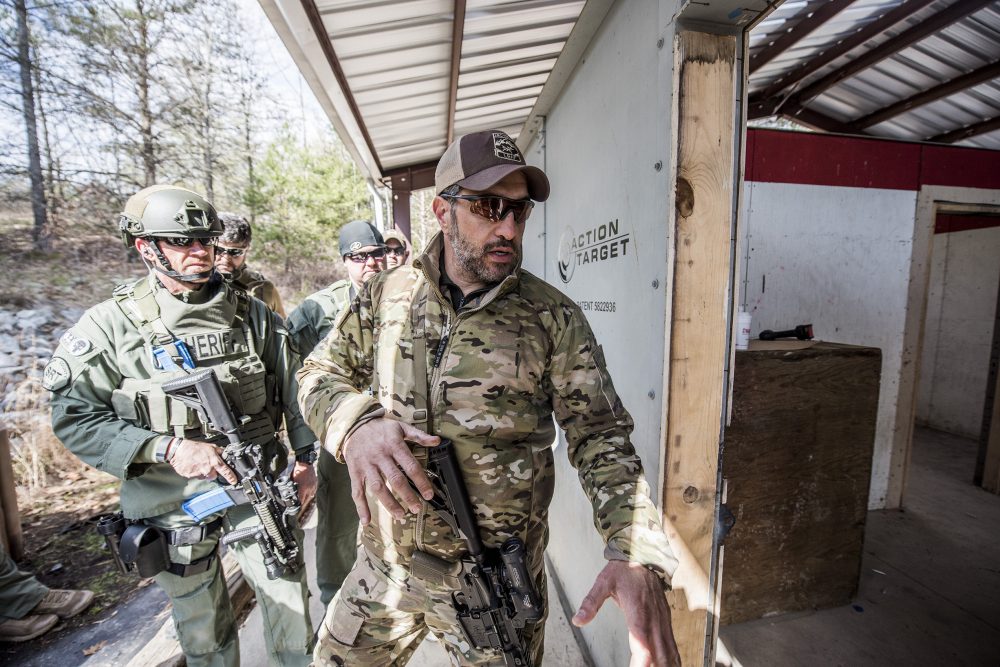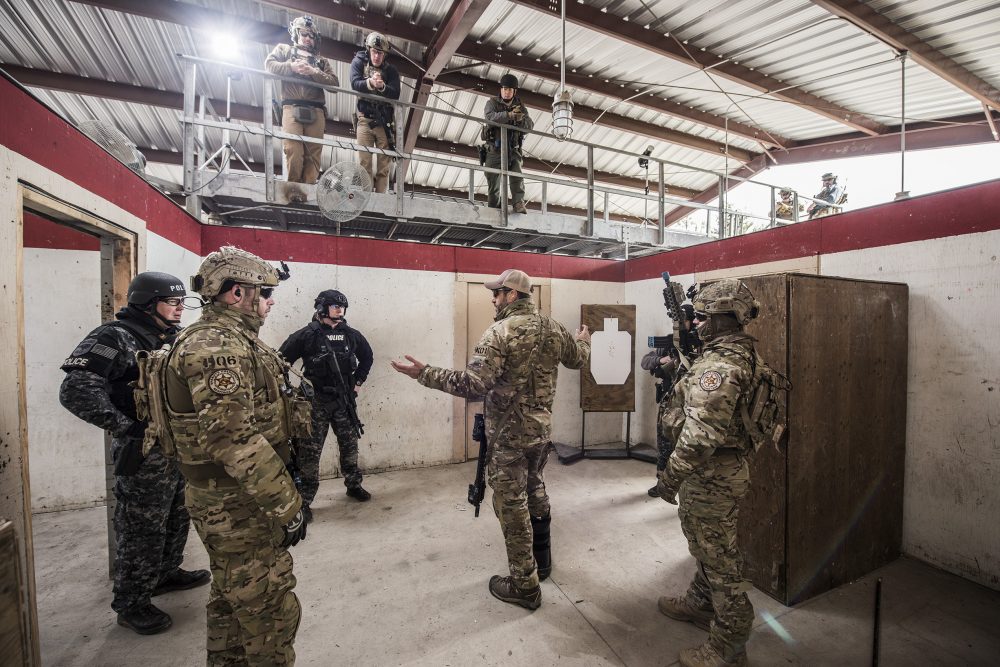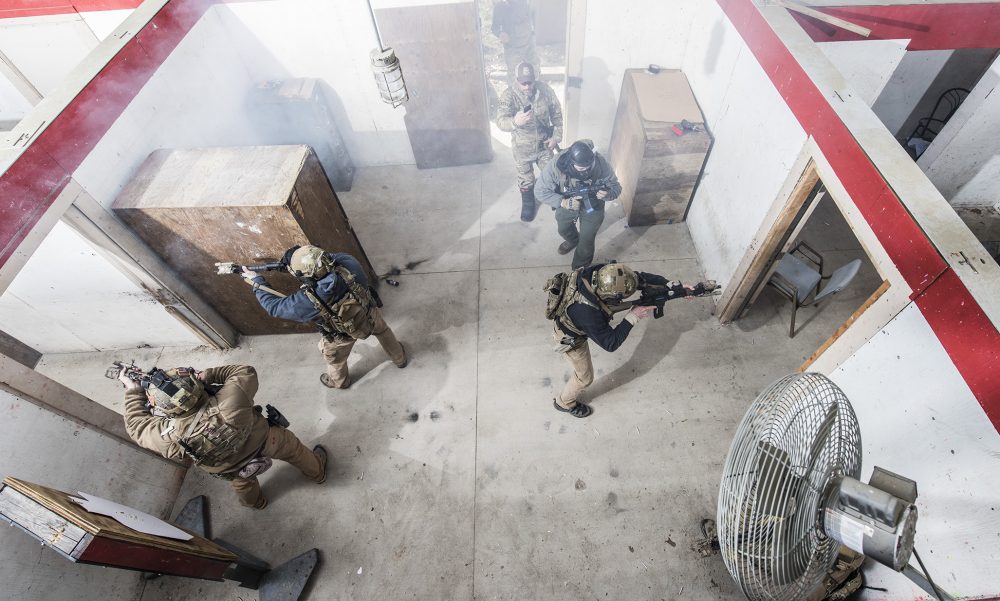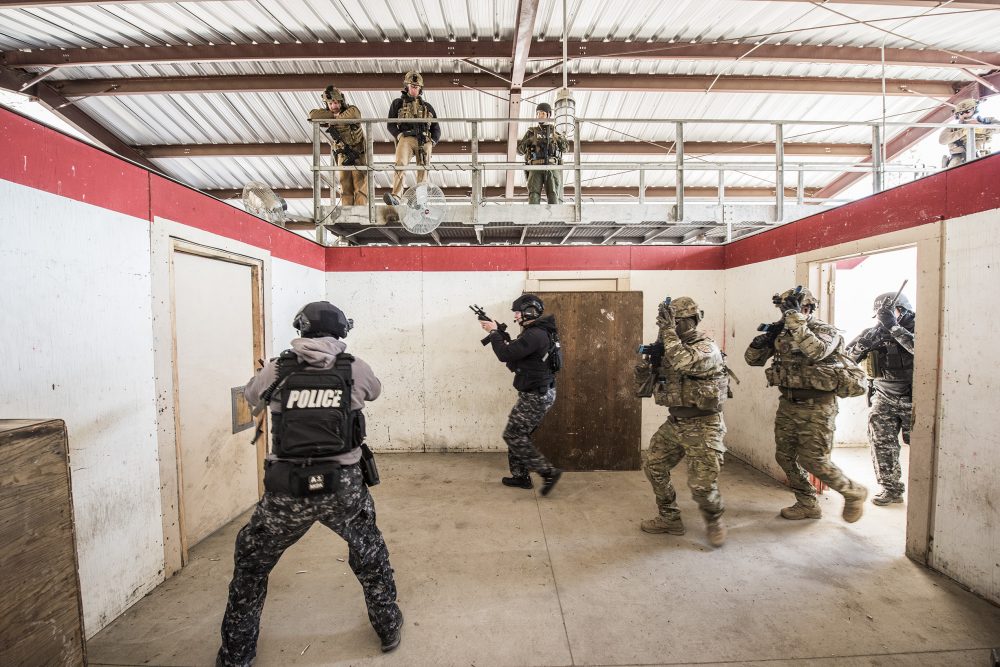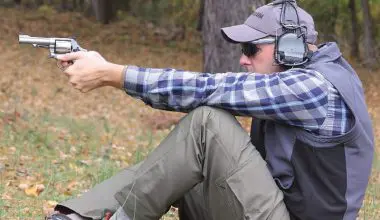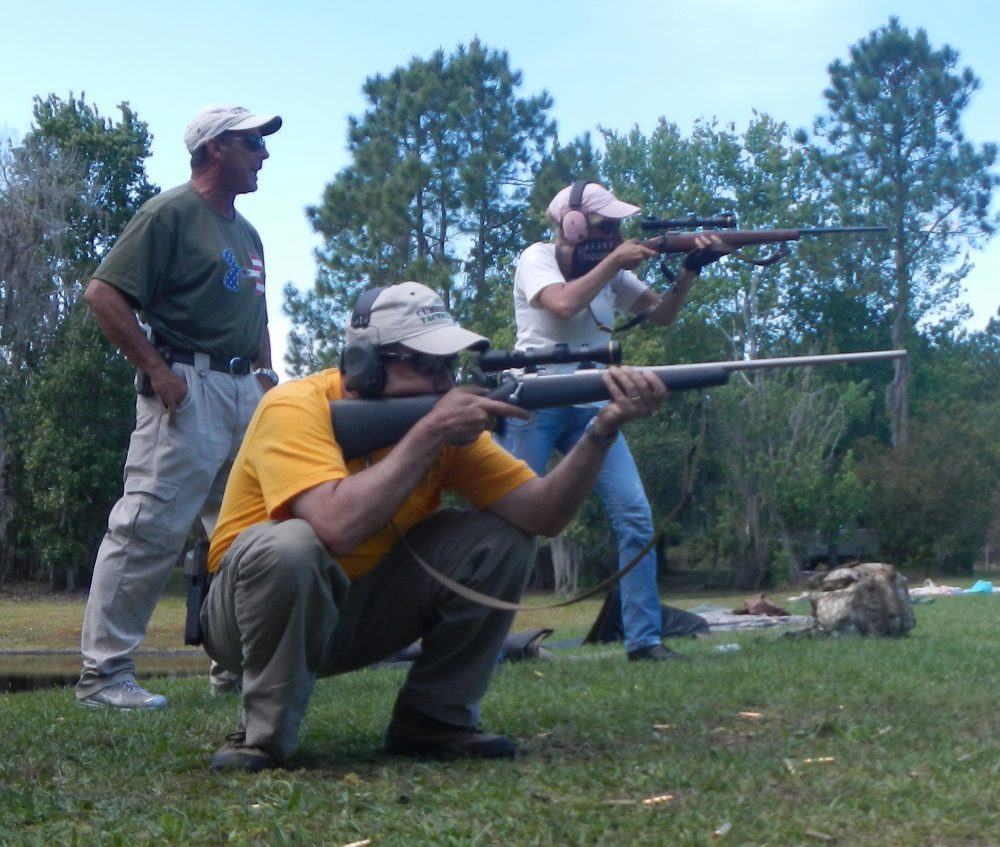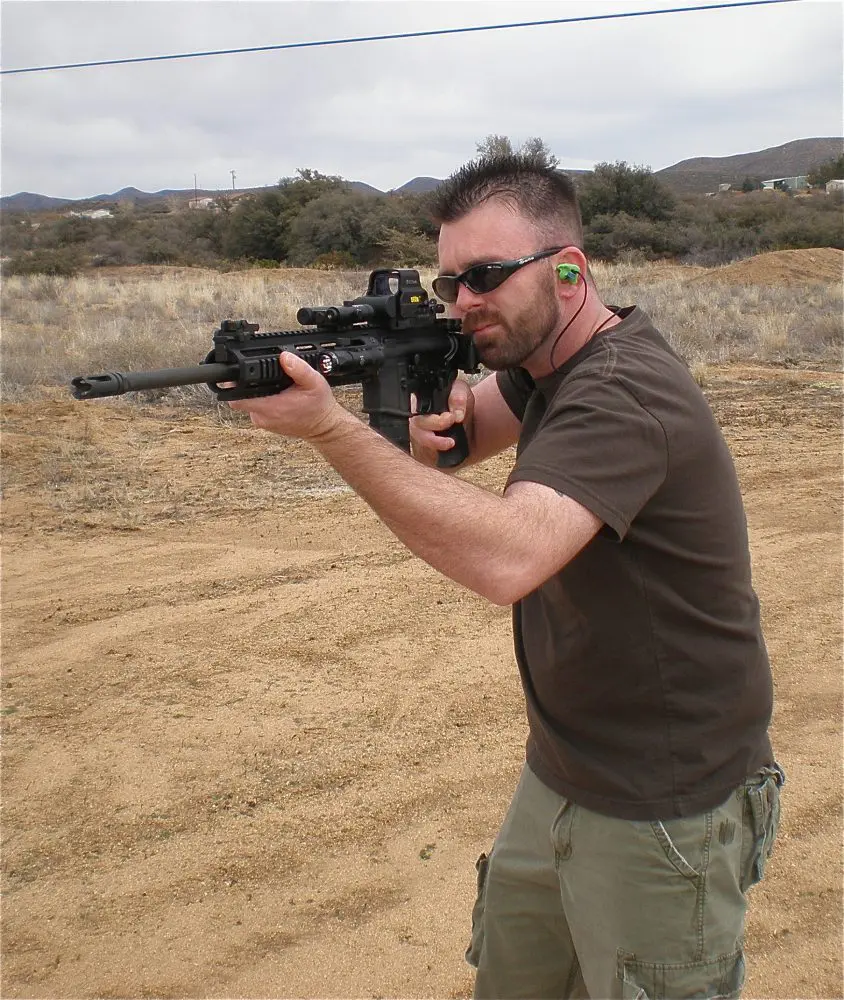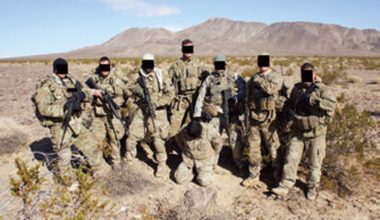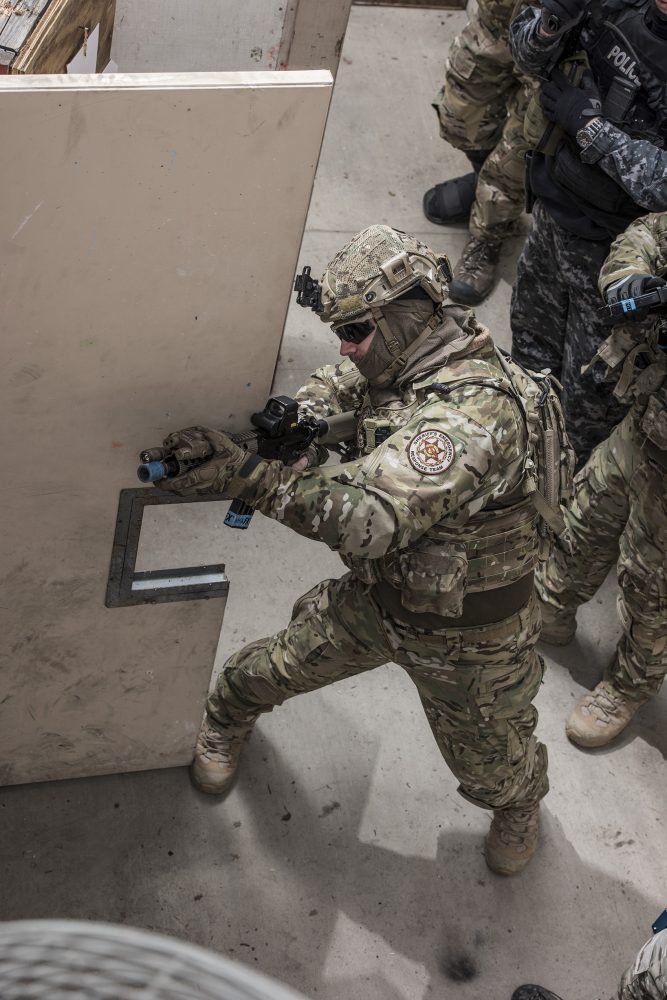
I recently had the opportunity to attend an Esoteric, LLC training company CQB course. This was easily one of the most eye-opening courses I have ever attended. Prior to diving deep into the best-kept secret in the training community, I should note I am basing this after-action review on previous training experience under some of the industry’s best instructors, ranging from Larry Vickers to Travis Haley.
The course’s subject matter related directly to what I do in my job on a regular basis. Employed at a midsize police department (160 sworn officers), I am tasked with many roles: investigator, firearms instructor, rapid deployment instructor, and the role I am most passionate about, SWAT.
Many police officers, SWAT officers included, across the United States find it difficult to make time for training. Whether the lack of training is due to logistics or funding, our local agencies field SWAT officers who have attended a basic SWAT course, with on-the-job experience encompassing all further formal training.
This leaves SWAT teams victim to “institutional inbreeding.” My refusal to succumb to the standard minimal training offered, combined with a desire to better myself and become a tactical asset to my agency, leaves me continuously searching for courses that focus on practical applications of SWAT tactics.
A few years ago, a fellow detective and SWAT team member told me about a training company called Esoteric. After visiting their website, I learned the owner/lead instructor is loaded full of certifications, with high-speed, low-drag experience to back up his wealth of knowledge.
Impressed with what I’d read, I emailed the company and they replied about a hostage rescue course I was interested in attending. A few months later, another detective and I found ourselves in Guilford County, North Carolina soaking up valuable instruction in the area of hostage rescue. Upon returning to my agency, I addressed our team with just a fraction of the knowledge we’d gained, showing how truly unprepared we were for a hostage rescue mission.
A few months later, I received an email from Esoteric notifying me they were going to hold a “High Intensity CQB” course, and the tactics were completely different than the HR course I’d attended. Upon learning about a second opportunity to train with Esoteric, the same detective and I were signed up and packed before we even had the chance to break it to our wives that we would be away training for another week.
Yousef gives teaching point on what can be cleared outside the entry point.
Table of Contents
TRAINING DAY 1
At the end of February 2016, I was back in Guilford County for the first day of a four-day CQB course. The class was held at the High Point Police Department range, which is a state-of-the-art facility. The course began in a large classroom, where our instructors, Yousef Sansour and Matt Holder, established rules and regulations for the facility, and firearm safety rules.
After the initial brief, we headed to the flat range, where Yousef and Matt evaluated our current skill levels. They ensured we were safe in manipulating our weapon systems and able to hold a group on target.
Being an exclusively LE/MIL class, everyone was utilizing an AR/M4 of some sort, along with several different handguns. The students who are actively serving our country thought the techniques taught were relevant to the way they operate overseas as well, and adapted certain methods taught.
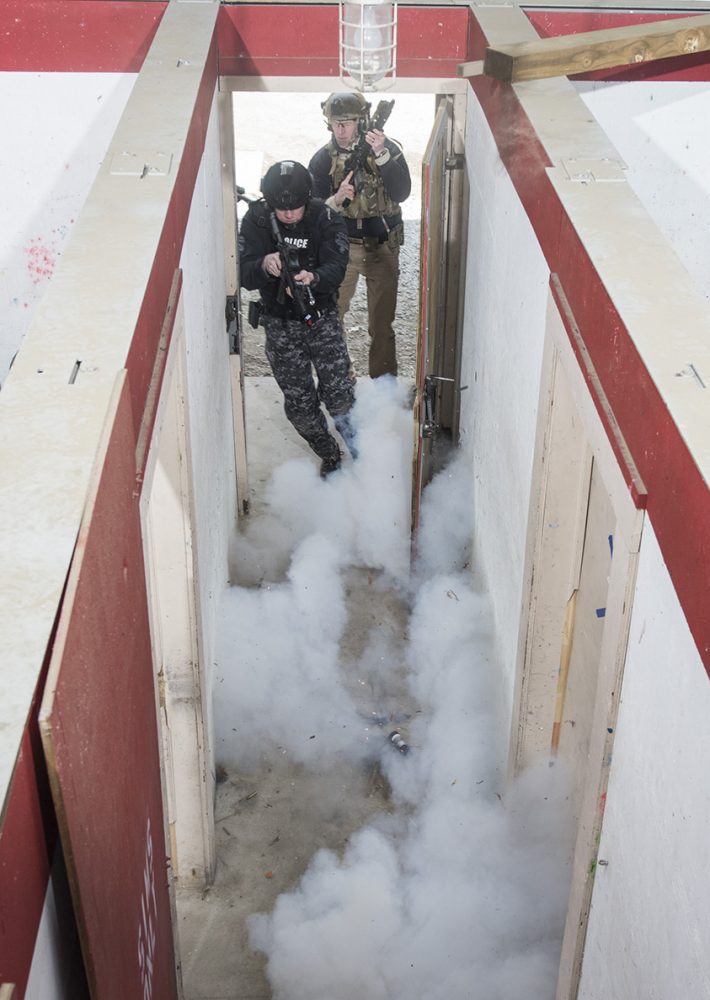
Since Yousef and Matt shoot competitively, all our work was scored on an IPSC/USPSA-style target. Anything outside the 6×10-inch “A” zone was unsatisfactory, and most drills pushed movement and time to make sure all students could function under stress.
Yousef is an accomplished Grandmaster shooter in the United States Practical Shooting Association, hence the reason for using USPSA-style targets. This is also a plus when dealing with a training company: knowing they have instructors who push themselves on a competitive level.
We performed several drills on the square range, and after a lunch break, headed up the hill to the shoot house, an impressive one-story structure with a catwalk overhead. This training area is covered, so training can continue even in adverse weather conditions. All doors and windows in the building can be breached in various ways, e.g., mechanical, ballistic and explosive, so if your team has explosive breaching capabilities, you can bring them with you and work on a specific technique.
Yousef and Matt began the shoot house portion of the course with empty weapons and two-man room entries. They are firm believers in working points of domination and making a tactical “L” when the team enters the room. We repeatedly trained these techniques to perfect the movements, ironing out bad habits and ensuring students were not married to their optic.
As we entered each room, the instructors taught us to look around as we cleared our objectives, so we were looking for work, and ultimately checking to make sure our buddy has entered the room safely. Once we grasped the two-man entry, they quickly added three- and four-man elements into the mix, along with audible commands.
When approaching a door, it was expected that everyone was saying, “Open door right!” or “Closed door left!” so the team knew which way the mission was moving. The instructors explained each student’s role in their area of responsibility as they entered the room. We trained on this for the remainder of the first day, with class ending at 1700 hours. But when class was formally dismissed, Yousef and Matt hung around so students could bounce ideas off them and ask about the way their team operates.
Team member holds rear security while rest of team deals with unknown threat.
TRAINING DAY 2
TD 2 also started off in the classroom, and during this block of instruction, Yousef described some of his previous work experience, along with some of the groups he has worked with over the years.
Yousef’s humble nature kept this short, at which time we dove into PowerPoint instruction. He explained how his team prioritizes their work, e.g., armed subject, unarmed subject, open door, closed door. Yousef also explained the difference between points of domination (POD) and the strong wall technique, and why they prefer the POD technique.
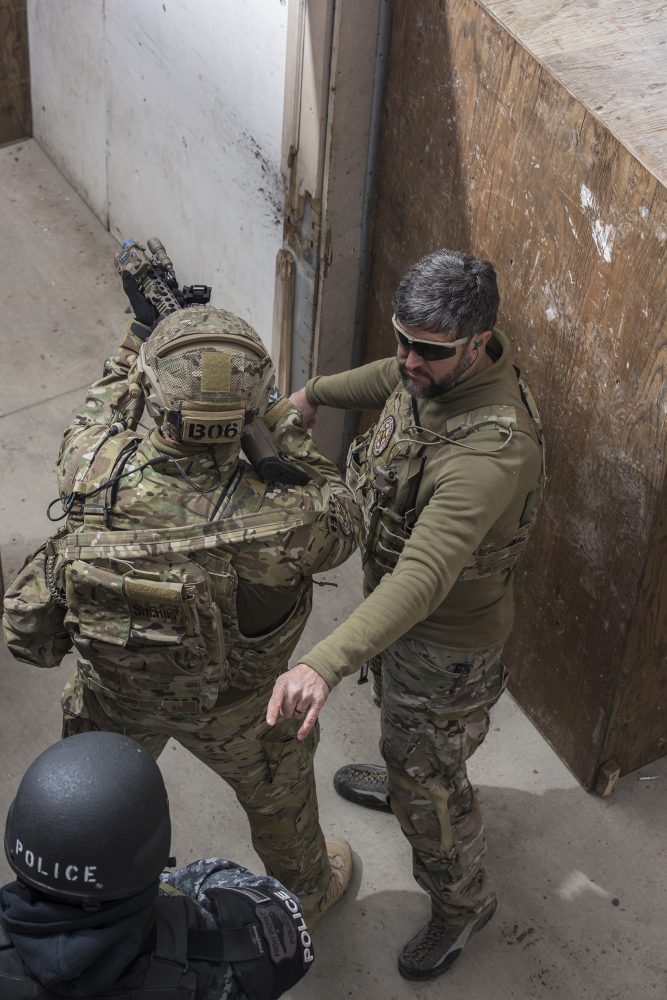
Some instructors have a “my way or the highway” approach, but these guys take the time to explain why certain techniques work on missions and others don’t. Another thing they do as a team is fight room-to-room. The thought process behind this technique is that any tool needed is already in the room, instead of having your team flood the house and needing a tool that is on the other side of the structure.
This might sound like it takes longer, but in small inner-city houses, you can literally open the front door and see the back door. It also allows for accountability and, if shots need to be fired in a specific direction, anyone can engage and they don’t have to worry about a teammate in a room that shares an adjoining wall.
The application of this concept to a large structure is even more logical because you have all the necessary equipment in one room. If you run into a breaching problem, someone on the entry element has a tool for that specific job.
After completing the PowerPoint, we broke for lunch, then headed back to the shoot house. We started off by running four-man entries to get the flow from the previous day, and next started working hallways.
From a basic hallway to more complex T-hallways and four-way intersection hallways, Esoteric is a big believer in getting the team out of the hallway. They base this strategy on opportunities to work with some legit teams on the west coast, teams who have lost good men in hallways due to running a “Hall Boss.”
As we worked hallways, we did solo operator up front and a two-man front with crossing fields of fire. These hallway movements were fast! We used a pace just under a run, slowing down before getting to the next priority of work. If this is a small area of operation, you’re not moving very far, but if it’s a school or another large structure, the team needs to be moving quickly.
This concluded the second day of training. Again, both instructors stayed around so if students had questions that weren’t fully answered, they could address them.
Yousef explains how to work points of domination in a room versus the strong-wall style of room clearing.
TRAINING DAY 3
TD3 started like the previous two. We practiced flowing as a team through the shoot house. When the instructors were satisfied with everyone’s movement, we grabbed ammunition.
Unlike the previous two days, when we had the option to wear body armor, once we started with live ammo, everyone was required to wear all their PPE (personal protective equipment). Yousef and Matt made it very clear that if they observed anything unsafe, they would stop everything immediately and address it appropriately. Any major violations could result in dismissal.
After the safety brief was completed, it was back to square one with two-man entries. By the end of the day, we had worked our way up to executing four-man room clears. Flowing from room to room with full kit (30 to 40 pounds) can be exhausting, especially when it’s repetition after repetition, but that’s why I take these courses.
Replicating the feeling of being mentally drained yet still needing to process what I must do when entering a room is a critical ability when it is my turn in the real world. Every run through the house was different. Just the simple movement of a threat can throw you in an OODA loop.
Even better, the shoot house we trained in was completely ballistic, so the instructors could put the threat anywhere if they thought students were gaming the room clear.
After deploying flash bang, team makes entry and members move to their areas of responsibility.
TRAINING DAY 4
The final day was reserved for scenario-based training. Everyone who had Sim-bolts for their weapon installed them, and the ones who didn’t used someone’s spares. All the toys got pulled out. We threw distraction devices, used explosives to breach our entry points, and even utilized a chainsaw to solve a problem during one scenario.
The final day showed each student what could go wrong on a callout, and what tools you need to address each problem. It also showed angles. There is no better way to teach someone than sending them deep into a room, then shooting them with a Simunition round from another room. Scenario-based training truly saves lives when paired with Simunitions.
At the end of the day, we debriefed the course. The instructors truly cared about our input and how they could improve the class, if that is even possible. At the conclusion of TD4, Yousef handed out our certificates, we said our goodbyes and headed back home.
Entry element has cleared room and is moving to next unknown threat.
On the lengthy drive back to our agency, my teammate and I began a debrief of the past week’s events. Of course our initial thoughts were how the techniques we’d learned would benefit our SWAT team.
My teammate, who is also a narcotics detective, made a good point. Narcotics and other specialized units within departments often execute more warrants than the SWAT team. As we continued to discuss the course, it was obvious that the benefits of the training and its particular techniques go far beyond just SWAT applications.
As I have now taken two courses with Esoteric, I cannot say enough about this training company. The instructors have impressive backgrounds and a wealth of knowledge, as was clear throughout the course. I highly recommend you visit Esoteric’s website and read up on the company for yourself, to determine if their training is appropriate for you.
Training classes as good as Esoteric’s are few and far between. You won’t be disappointed if you drop the coin for one of their courses.
Jacob Parker has been in law enforcement for over seven years and an active member of his department’s SWAT team for over six years. He worked in the Patrol Division for six years and is currently assigned to the Criminal Investigative Division. In addition to his regular duties, he is also a Specialized Firearms Instructor and Rapid Deployment Instructor.
SOURCE
ESOTERIC, LLC.
www.esotericllc.com
